How to substitute oils in soap recipes is probably the number one question I get on a weekly, if not daily, basis.
It stands to reason. You have a fun looking recipe and are excited to try it, but then you see that it has one or more oils that you don’t have on hand, or it has ingredients that you don’t care for so you want to make some changes.
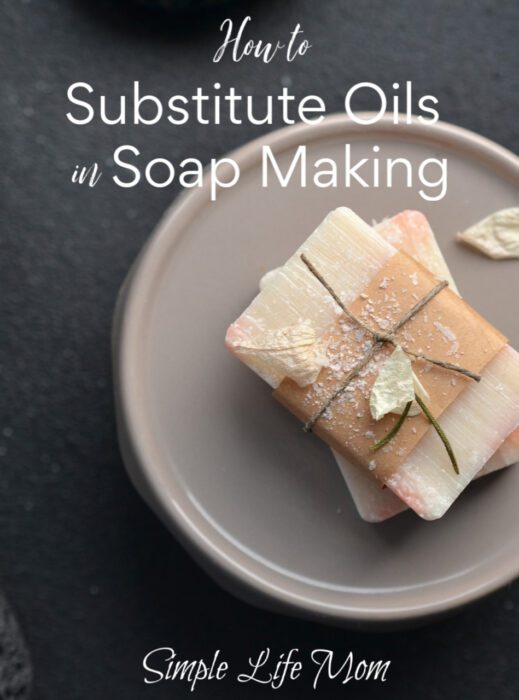
Oils Have Specific Properties
You can study the exact ratios of particular acids that make up a great soap recipe, but I wanted to keep things simple since the people who tend to ask about substitutes are new to soap making. Click here for my step by step guide for soap making cold process and click here for the hot process method.
Soap recipes are created with certain oils for a reason.
Oils are added to soap recipes to add bubbliness, as well as cleansing, moisturizing, hardness, creaminess, and conditioning properties. If you take one of these oils out, then you need to understand what it does and what why it was there in the first place.
To help with this I’ve inserted the chart below. Use this chart to better understand what oils do within a soap bar. Most have multiple properties, but their top most is listed.
| Oil | Value | Soap Properties |
| Tallow | All around great ingredient for soap making. Makes a great, long lasting, cleaning and bubbly bar. Make sure to choose a free-range, natural source. | Conditioning, Cleansing, Hardness, Stable Creamy Lather |
| Coconut Oil | Coconut can be drying if it is over 45% of total oils in a soap IF you do not compensate by increasing the superfat content. it makes a wonderful cleansing, hard bar with great bubbles. | Cleansing, Adds Hardness, High Lather with High Stable Bubbles |
| Avocado Oil | High in vitamins A, B, D and E oleic and palmitoleic acids. | Conditioning, Medium Creamy Lather |
| Babassu Oil | High in vitamin E and antioxidants like phytosterols. | Cleansing, Adds Hardness, High Bubbles |
| Castor oil | 90% ricinoleic acid, which has traditionally been used to help heal skin conditions. | Conditioning, Moisturizing, Creamy Lather with High Stable Bubbles. |
| Cocoa Butter | High in vitamin E and other antioxidants. It doesn’t fully saponify, so it lends more of its properties to soap after curing. | Conditioning, Moisturizing, Adds Hardness, Stable Rich Lather |
| Sweet Almond Oil | Gentle on the skin, Has vitamin A and E and oleic and linoleic acid. | Stable Medium Lather |
| Shea Butter | Gives a silky feeling to bars. High in vitamins A and E, fatty acids and minerals. | Conditioning, Adds Hardness, Stable Lather |
| Olive Oil | Gentle oil with little cleansing properties, but high in antioxidants (Vitamin E and polyphenols). Makes a very soft soap and is best paired with a harder fat or oil. | Very Conditioning, Low Cleansing |
| Apricot Kernel Oil | High in vitamin A, C, E, linoleic and oleic acids. Too much can make soap too soft. | Highly Conditioning, Moisturizing, Stable Creamy Lather |
| Argan Oil | High in vitamin A and E and antioxidants. | Conditioning, Moisturizing, Adds Hardness, Stable Rich Lather |
| Neem Oil | Calming, gentle oil used in soaps as an anti-inflammatory and anti-bacterial oil. | Conditioning, Moisturizing, Adds Hardness, Stable Creamy Lather |
| Mango Butter | High in Vitamin A and C and antioxidants. | Conditioning, Moisturizing, Adds Hardness, Creamy Lather |
| Macadamia Nut Oil | High in antioxidants, oleic acid, omega 3 and omega 6 fatty acids. | Conditioning, Adds Hardness, Creamy Lather |
| Lard | Makes a great, long lasting bar. Make sure to choose a free-range, natural source. | Conditioning, Adds Hardness, Stable Creamy Lather |
| Jojoba Oil | Like beeswax and cocoa butter, it doesn’t fully saponify, leaving more to hydropylic (water loving) qualities to help moisturize dry skin. | Conditioning, Moisturizing, Strong Stable Lather |
| Hempseed Oil | High in vitamins A and E, but can go bad in soap faster than other oils. Use as 5% or less of total oils for a longer lasting bar. | Highly Conditioning, Low Lather |
| Hazelnut Oil | All around great oil for soap because it cleanses, moisturizes, and creates nice bubbles. | Moisturizing, Cleansing, Stable Medium Lather |
| Grapeseed Oil | High in lioleic acid, omega 6 fatty acids, and antioxidants. | Highly Conditioning, Creamy and Stable Lather |
There are a lot more oils and fats that can be used, but this will give you a starting point for a basic understanding of some of the more common oils used in soap making. Get a good idea of why it was added and you’ll have an easier time at substituting one oil for another in a recipe.
Learn more about Soaping Oil’s Properties here.
Why You Can’t Leave an Oil Out or Just Switch It
Soap recipes are formulated for the specific oils chosen. When an oil is left out, the recipe will quite possibly be lye heavy.
Recipes are calculated so that 100% of the lye is used up in the chemical reaction that takes place when lye water is added to oils. No lye is left. Soapers use what is called lye discounting or superfatting to make sure oils are left over. Oils left over in soap will add moisturizing properties, but it also insures that all lye is gone in the process. Leaving 5%-15% leftover oils is common.
When you leave an oil out, you change the oil to lye ratio and you could have lye heavy soap. No one wants to rub soap on their skin that still has lye in it.
This can also happen when you switch one oil for another. Each oil requires a certain amount of lye to convert it to soap. The differences are small but they can add up in small recipes. Larger recipes give you a little more wiggle room because the measurements do not have to be quiet so precise. This is why you’ll always hear something like, “Use Lard to replace tallow, but run it through a lye calculator just in case.”
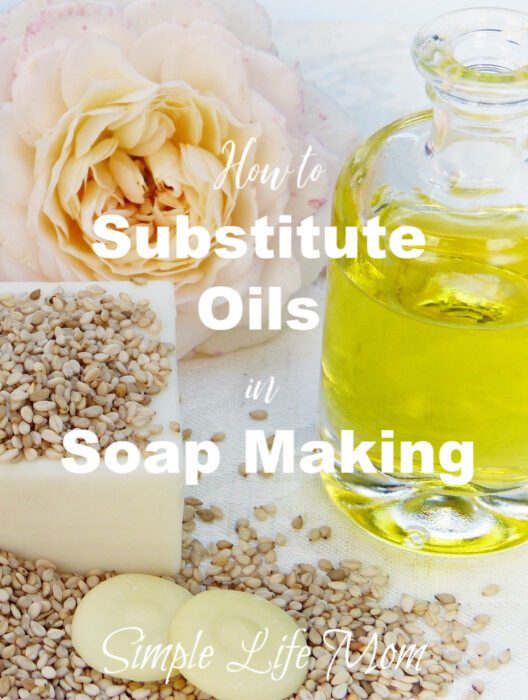
What’s a Lye Calculator?
Lye calculators are simply calculators that have the amount of lye it takes to convert an oil to soap entered into it so that when you put in how much oils you want to use, it will give you how much lye you need to convert those oils into soap.
It should also have a place for you to indicate how much of a lye discount or superfat content that you desire so that it can give you the amount of lye that will provide that superfat content.
I like to use soapcalc.net. I like the versatility, choices, and ease of use. I’ve never had a problem with recipes I’ve created using their calculator.
Guidelines for Substituting Oils
With all that being said, there are some general guidelines for substituting. After all, if you’ve been making soap for a while, you can see what works and what doesn’t.
I will still always say to run it through a lye calculator, but at least you have a starting place for what to choose instead.
Method #1 – Use a Different Recipe
By far the easiest method is to use a different recipe.
I don’t mean that you can’t have the design and scents that you want. I simply mean, if you are vegan and you see a recipe for rose soap that you really want to try, but it uses tallow, then you can easily use a good vegan recipe that you love and use the methods of the rose soap recipe that you want to use.
View recipes as base oils, lye water (and sometimes milks), and extras.
The extras are the herbs, clays, honey, essential oils, oats, etc that you want to add to your soap. These can be added to any soap recipe.
Yes, there are changes. If you want to work with swirls, then you don’t want your recipe to be too thin or thick. If you want to create layers, then you need your soap to come to trace faster. This all changes when you switch up recipes so keep this in mind when you use a different recipe. But in general, you can use that favorite vegan recipe and add the rose essential oil and rose clay and get a wonderful bar of soap that looks just as the original recipe would look.
Method #2 – Liquid and Solids
In general, when you’re missing or don’t want to use a liquid oil, then choose another liquid oil as a substitute. Substitute an oil that’s solid at room temperature for another oil that’s solid at room temperature.
- Butters: If you don’t have one butter, then consider another butter (cocoa, shea, coffee, avocado, mango).
- Tallow, Lard and Palm oils are ones that can be substituted without running through a lye calculator and I’ve never had a problem.
- Coconut oil, Babassu oil, and Palm Kernel oil can be substituted for one another (notice that palm kernel oil and palm oil are two different things and are not interchangeable.
- Sunflower, safflower, canola, olive, peanut oils can be substituted for one another, but I recommend substituting a combination of the oils when wanting to replace a large amount of olive oil.
- Other oils: hazelnut, sweet almond, apricot kernel, grapeseed, hemp, etc. can replace one another without any problems.
- Beeswax can be substituted with jojoba or cocoa butter.
- Castor oil is really the only one that I would saw has no direct substitute that does similar things within soap. You can always replace it with another liquid oil, but you won’t get the same textured or sized bubbles in your soap.
Method #3 – Ratios
This is more of something to keep in mind than a method. If your recipe calls for a lot of olive oil, but it’s the one oil you don’t want to use, you need to keep in mind that you are removing most of the recipe. It would be better to start from scratch or use a different recipe.
If you are making a 3lb batch and want to replace 2 ounces of oil, it’s an easier task than if you were wanting to replace an oil that is 12 ounces of your recipe. Replacing 2 ounces of sweet almond oil with apricot kernel oil will be fine.
Now all you need are some Recipes!
I have a lot of recipes here on my website. Just click on the Soap Menu tab above or click here, and get how to instructions and great recipes like:
- Rose Soap
- Anti Aging Face Bar
- Activated Charcoal Detox Soap
- Nettle Shampoo Bar
- 4 Soap Recipes for Dad
- Glycerin Soap
- CBD Soap
- And lots more here.
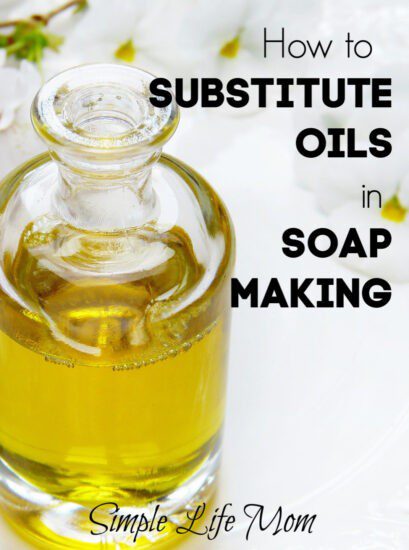


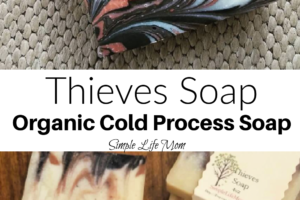
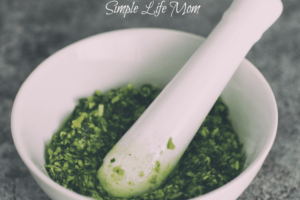
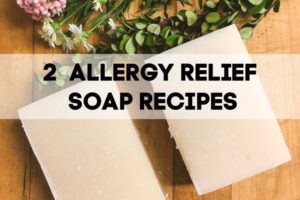
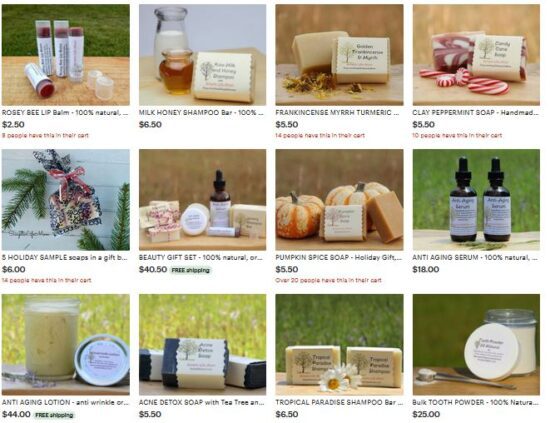
17 Comments
Leave your reply.